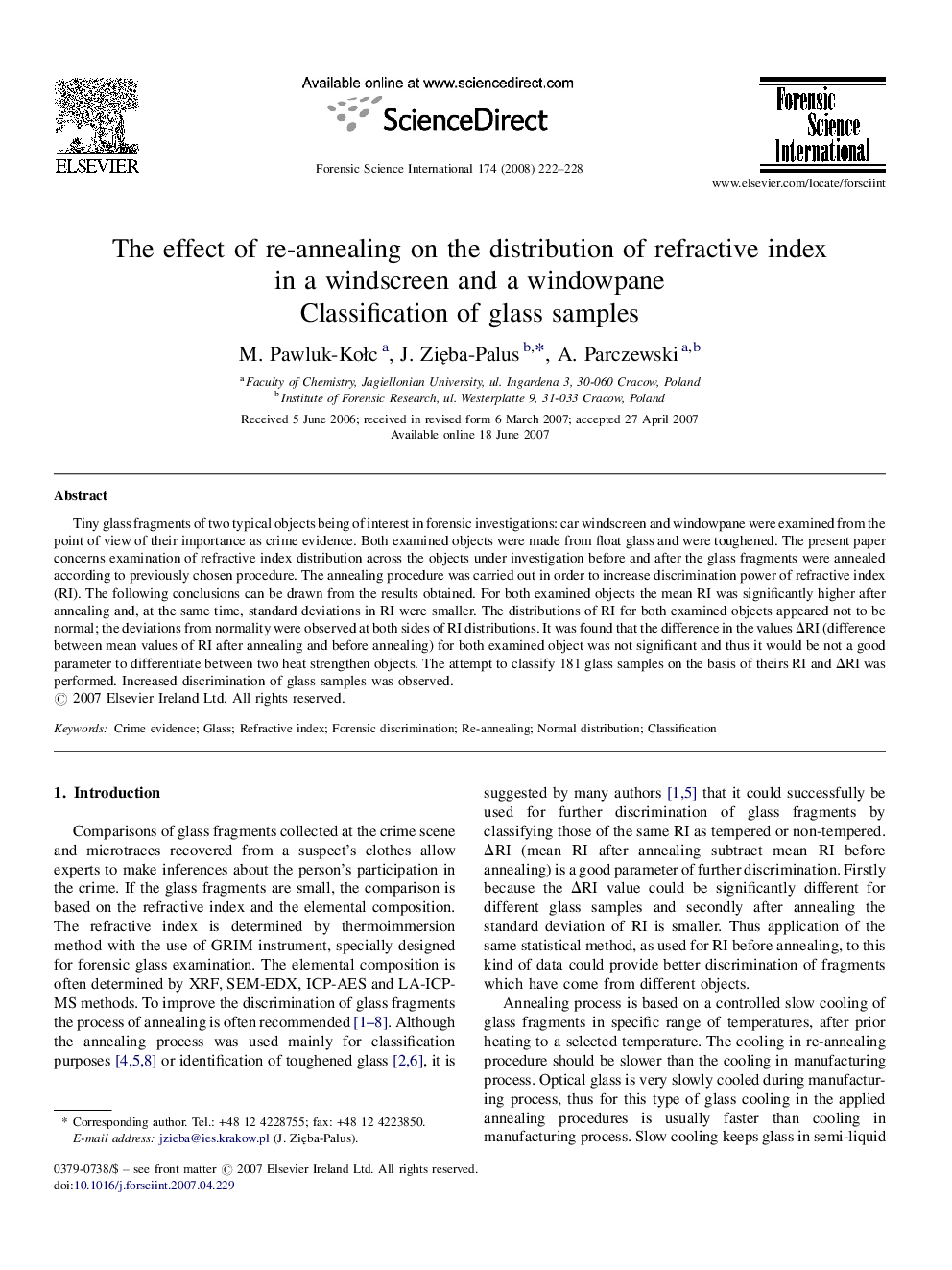| Article ID | Journal | Published Year | Pages | File Type |
|---|---|---|---|---|
| 97764 | Forensic Science International | 2008 | 7 Pages |
Tiny glass fragments of two typical objects being of interest in forensic investigations: car windscreen and windowpane were examined from the point of view of their importance as crime evidence. Both examined objects were made from float glass and were toughened. The present paper concerns examination of refractive index distribution across the objects under investigation before and after the glass fragments were annealed according to previously chosen procedure. The annealing procedure was carried out in order to increase discrimination power of refractive index (RI). The following conclusions can be drawn from the results obtained. For both examined objects the mean RI was significantly higher after annealing and, at the same time, standard deviations in RI were smaller. The distributions of RI for both examined objects appeared not to be normal; the deviations from normality were observed at both sides of RI distributions. It was found that the difference in the values ΔRI (difference between mean values of RI after annealing and before annealing) for both examined object was not significant and thus it would be not a good parameter to differentiate between two heat strengthen objects. The attempt to classify 181 glass samples on the basis of theirs RI and ΔRI was performed. Increased discrimination of glass samples was observed.
